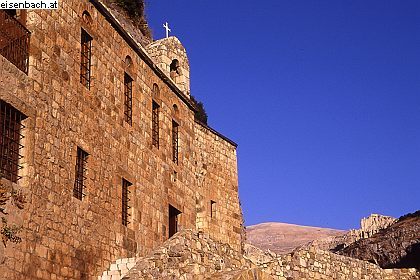In Memory of my Lebanese Ancestors…
Walid Phares DC/April 25/15
In the days preceding and following the deep sorrow expressed across the Middle East about the destruction of communities, particularly Armenians, Greeks, Assyrians, Syriacs, and others, including Christian and Muslim freedom activists who were executed and all those who died during WWI, one other terrible tragedy isn’t mentioned enough in the international media and not referred to enough by officials, leaders and historians, the death of the third of Mount Lebanon population. Most Lebanese families of the Mutassarrifia relate to losses of their kin somewhere throughout the mountain from the far north to the far south.
In my own village, Ghouma, one fifth of the households vanished because of the famine that resulted from the blockade of Mount Lebanon during WWI. Entire neighborhoods emptied. My father Halim Phares who was five years of age in 1915, kept reminding us as we were growing up in Beirut, of the tragedy citing tales and stories from the years he spent with our grand mother Wardiye’ (Rosa) Dargham-Phares in Chekka. The one word we learned from that episode was “ekmek,” meaning bread. Out of three hundred thousands who lived in Mount
Lebanon, one third died, less than a third emigrated and the last more than a third constituted the nucleus that formed the new Lebanon. Unfortunately post WWI Lebanon had bled too much to be able to revive its national identity and claim its future as a nation that resisted thirteen centuries in the face of powerful empires. The Ottoman Sultanate destroyed one third of the people of Mount Lebanon, Le Petit Liban, during WWI. But the new political elites of Greater Lebanon, hungry for power and reckless in their choices, destroyed the future of Mount Lebanon.
As I wrote eighty years later in the Magazine ‘al Maruni’ (September 1, 1980, thirty years ago) the political establishment that managed the public affairs of the new republic of Lebanon particularly since 1943 left a disaster behind them. For Greater Lebanon as a country, pounded by the PLO, Syria and Iran, had shrunk to become smaller than ‘Smaller Lebanon’ in the 1980s. And since 1990, Neither Le Grand Liban nor Le Petit Liban exist in reality.
It is a republic sandwiched between the Ayatollahs and the Jihadists. Our ancestors died from hunger for nothing, while the elites fed themselves with wealth and with the shame of collaboration with any power that kept them on top, even if the bottom was suffering…
Dedicating these thoughts to the memory of my ancestors…
Lebanon’s dark days of hunger: The Great Famine of 1915-18 | The National
Long forgotten, the great famine on Mountain Lebanon began 100 years ago this month, claiming half a million lives.
thenational.ae


















